Free Fiction
This week’s free fiction is a horror/fantasy set in the wilds of Canada’s North.
Bones By Karen L. Abrahamson
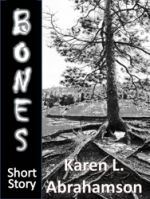
This week’s free fiction is a horror/fantasy set in the wilds of Canada’s North.

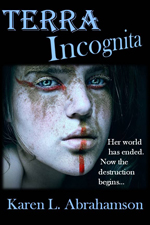 I’ve been thinking about magic systems a lot lately because I’ve been working on novels that involve magic and I’ve been planning out book number two in the Terra Trilogy. I also happened to catch a bit of Jurassic Park last night and for the first time really heard the Jeff Goldblum character give his lecture about how the Jurassic Park scientists had come by their science too easily, and how everything – in their case the creation of dinosaurs—came at a price. In Jeff’s case he was foretelling the deadly price that was to come in the movie, but what he said resonates on many levels. Everything has to come at a price to characters, especially when it comes to magic.
I’ve been thinking about magic systems a lot lately because I’ve been working on novels that involve magic and I’ve been planning out book number two in the Terra Trilogy. I also happened to catch a bit of Jurassic Park last night and for the first time really heard the Jeff Goldblum character give his lecture about how the Jurassic Park scientists had come by their science too easily, and how everything – in their case the creation of dinosaurs—came at a price. In Jeff’s case he was foretelling the deadly price that was to come in the movie, but what he said resonates on many levels. Everything has to come at a price to characters, especially when it comes to magic.
This relates to the planning and the world-building a writer must do before they write their book. I recall when I wrote my first book set in the Cartos universe, a universe where god created both humans and older beings made not of clay, but of earth and the Creator’s blood. This gave them the power to Create and change, so they can rewrite the landscape of their world. But the power of almost gods has to come at a price, so what would be fitting? Sure, there would be exhaustion, but there has to be something more. Logically, the price has to relate to the magic, so Creation had to play into the price. In this case, use of the Cartos magic means they are taking power from the mother goddess, so the price is that they must repay that creation. Which means that after the use of their power, they desperately need sex, which repays creation with procreation. If they don’t have sex, lets just say bad things happen. It may sound funny when I talk about it, but think about the consequences. No wonder the characters are hedonists and generally bitchy. How would you feel with a case of lust that literally burns in your bones after you’ve used the magic? Think about the societal impacts that sort of magic might have. It plays big into my upcoming epic Fantasy, the Warden of Power, and equally as big into my dytopian Fantasy, TERRA Incognita, my Historical Y.A. fantasy The Cartographer’s Daughter which will be coming out in September and in my current Urban Fantasy Afterburn, all of which take place in the Cartos universe.
But the price of magic exists even when it isn’t quite as front and centre. Magical creatures pay a price for their power. The Fairy folk can’t touch iron. Vampires, by their very nature, are killed by sunlight. Werewolves lose total control once a month and have to live with the guilt they inflict on the people they kill. Zombies—well—they fall apart, and even Patricia Briggs’ Mercy Thompson character who seems to get off pretty lightly for being a shape shifter, is part of a race that has been almost wiped out because of their power.
In today’s commercial world, this need to ‘pay’ seems normal, because these creatures aren’t gods. They are creatures ‘imbued’ or, some would say, ‘inflicted’ with magic. So magic is not only their ‘specialness’ but it is also a burden to carry. After all, even the Cartos carry the burden of Creation and knowing that if they change the landscape, they change all the beings on it—including the humans with whom they intermarry.
As non-magical beings and, in my case, a writer, I think this is one of the key lessons perhaps Jeff Goldblum, and Michael Crichton, author of Jurassic Park, were commenting on. Yes, they were talking about scientists, but in today’s society we need to remember that everything comes at a price and not just at the grocery or the department store. Last night, in addition to Jurassic Park, I also caught a National Geographic special on Patagonia and Tierra del Fuego. The special talked about the huge decline in the penguin, parrot and albatross colonies and in the dolphin and sea lion populations due to the industrial fishing taking place in that part of the world. Night shots from space showed the lights of the industrial fishing fleets were brighter, and larger, than the lights of Buenos Aires. Think about it: The fishing fleets are larger and brighter than a major metropolis! And so the sardine and other fish populations are disappearing and so are the birds and the porpoise and the seals that feed on them. Many of the young birds starve to death because their parents have to travel so far (fifty miles or more) for food and can’t get back in time to feed the chicks.
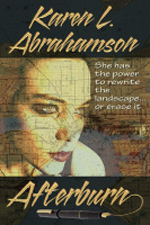 Many years ago, I read the wonderful fantasy novella by Larry Niven called The Magic Goes Away, about a world where all the magic had been used up. As I watched the Patagonia show last night it seemed to me that we are using up our own real magic— the funny little penguins , the rush of wings of the brightly colored parrots, the leap of the dolphin. When I read that book I was filled with a horrible sense of loss–the same feeling I had last night watching that show.
Many years ago, I read the wonderful fantasy novella by Larry Niven called The Magic Goes Away, about a world where all the magic had been used up. As I watched the Patagonia show last night it seemed to me that we are using up our own real magic— the funny little penguins , the rush of wings of the brightly colored parrots, the leap of the dolphin. When I read that book I was filled with a horrible sense of loss–the same feeling I had last night watching that show.
Unlike all those magical characters, we haven’t yet realized the price we’re about to pay.
This week’s free fiction story: Ruffles: Almost a Love Story

I’m going to end this marketing series (well if something else comes up, I’ll add it later, but next week I’m going to start blogging about my writing) talking about blogging. Not that I’m an expert by any means, but blogging seemed like the kind of social marketing I could control and manage, so I’ve done regular posts since January. Those posts were about prepping for my trip to Peru, about my wild and wooly Bengal cats, about my trip to Peru and then about marketing. All of them have been fun to write and hopefully you’ve enjoyed them, too, but I wanted to spend this post talking about how blogging has worked in terms of social marketing and what I’ve learned over the past eight months.
Has blogging lead to an increase in traffic to my site? Resoundingly, yes, when I check the analytics. However whether it was the right kind of traffic, I can’t say. I’ve certainly been spammed more. I’ve also had more comments, especially during the Branding Your Book blog, and during my trip to Peru. But the latter came with pretty pictures, so I’m putting the traffic down to that and the fact that maybe people were interested in my misadventures in Peru.
I suppose any increase in traffic to your website is a good thing as long as your titles are front and centre on your website, but I’ve been doing a lot of thinking lately about who am I actually drawing to the website with my blog. I mean who are these people who come and check out what I have to say?
I can’t be sure who was reading my blog when I was prepping for Peru and when I was travelling there. Some, I know, were friends and acquaintances, or friends of friends. All good, because blogging is a social enterprise. But who has been reading my posts about marketing? I’d guess, from who made comments, most likely other writers. Are these my target audience? Well, for a marketing blog, I’d say yes. But this raises three thorny questions I guess I should have thought of way back when:
1. Why am I blogging?
2. Why do I have a website? and
3. Who do I want to read my blogs?
I’ll come clean here: I had never really given thought to having a website or blog or any other marketing matter until it became clear that, before acquiring a manuscript, New York editors were checking out new authors to see if they had an online presence. It was okay if you had a website. It was better if you had a blog and a following on twitter and facebook. With the advent of indie publishing, this presence became even more important as a means to draw people in so that they would consider your books. The website was the most important place to promote your books and writing. So my question is, if my website and blog are to promote my writing, are they attracting my intended audience of potential readers?
The answer? Maybe. Maybe a potential reader might be interested in book marketing, but I think not so much.
What might a draw a potential book reader in?
Here’s my possible list:
1. Topics of personal interest to them. A Y.A. reader of books like Twilight might be interested in blogs about teen romance. They might also be interested in books that take place in a high school, or books about loner characters because, let’s face it, we all feel alone in high school. Interest might also be there for blogs about the challenge of being strong and independent when social pressures push young people to be anything else.
2. Other topics that interest readers – Again, using Y.A. readers as an example, issues of social justice and fairness, possibly environmental issues, issues of social exclusion, dealing with boy/girl-trouble etc. This list may, or may not, be different for Fantasy readers. Blogs on characters who are loners and who have special powers. Blogs on magic systems or magical creatures might have equal appeal.
3. Topics related to your writing – While any of the above topics can be related to your novels, topics related to your writing would focus on matters that relate to how you write. For example, how you built the world you are writing in; writing about the research process and interesting information you come across; writing about your writing process and challenges.
4. Topics relating specifically to your books – this would include writing about the locales where your books take place; ideas that led to the book, or ideas that were considered and discarded; or more information about your characters.
5. Personal information – like my blogs about my cats, readers enjoy knowing more about you and what makes you tick.
So my blogs over the next while are going to focus on what I think readers might enjoy and not totally on my fellow writers. That said, I have to say one of the more inspirational blogs to me is one written by fellow author Matt Buchman who talks (inspirationally) about where he draws his inspiration from. His blogs are great reads for anyone, reader or writer.
So as a reader, what topics would you like to see blogs about? As a writer, what do you like to blog about?
In my last post I mentioned that libraries are an asset that can assist with promoting authors’ work if the books are in print. As libraries are also gathering electronic collections, this assistance may also help with building followers amongst e-book readers. I wondered how a writer or indie-publisher might build a relationship with their local library and contacted librarian (and indie author) Ryan Williams for his take on how writers might work with libraries. First of all, let me thank Ryan for giving us his time.
 1. How should (or can) a writer approach a local library about carrying their book? Does this work for Indie Authors as well?
1. How should (or can) a writer approach a local library about carrying their book? Does this work for Indie Authors as well?
Talk to them, show that you can be a partner in helping the library. Many libraries will take books as donations, but reserve the right to add it to the collection or not depending on their selection policy. Some libraries do maintain local collections and will add local materials, but that might not include your novel if that doesn’t fit the selection policy for that library. If you haven’t made a connection with your local library then all they have to go on are reviews (or lack of reviews). Honestly, Indie authors may encounter resistance from some librarians, while others will think it’s just great. You really won’t know until you talk to them.
 2. How can a local library help promote an author?
2. How can a local library help promote an author?
Standard disclaimer, libraries are going to vary quite a bit. The best idea is simply to go in and talk to the librarian. That might not be the person checking out the books, but it could be! On our library website for each location we list the library manager for each location, so sometimes with minimal research you’ll know who you want to talk to. Calling ahead, identifying yourself as an author and ask to set up a time to talk can’t hurt.
That said I don’t think I’d approach it as the library helping to promote the author. Instead I’d approach it as something you can do to help the library. Many performers, storytellers, jugglers, etc. work the library circuit and charge for their programs. Tell the librarian that you’d be happy to do a program and be prepared to pitch a couple ideas. It might be about your background or books, or that might be only a piece of what you’re talking about. It could also be about your trip to Burma and how that has influenced your writing, or a program for teen writers, or whatever you think about doing. You could charge or not, your decision, but by giving the library an exciting program they’re going to be more enthusiastic. Given library budgets, you could even say that you’ll waive the fee. Libraries may produce publicity for the program which includes your author bio/pic/covers, etc (that you’ve provided).
It also can’t hurt to partner with a local bookstore to sell copies of your book at the event.
And after all of that, it’s possible no one will come. But if you’ve got an interesting program that isn’t exclusively focused on self-promotion it’s far more likely that library staff and patrons will be interested in coming.
3. Aside from asking a library to carry their book, what can a writer do to work with local libraries to promote their books?
A book sitting on a library shelf isn’t necessarily any more noticeable than any other book online. But if your local librarian loves your book? Then she’s going to hand-sell that to anyone that she thinks might be interested. Librarians do book talks and reader’s advisory all the time. If you’ve presented an engaging program for your library, if you’ve been a helpful partner, and if the librarian actually likes your book? Well, then you’ve got one of the best possible advocates for your books.
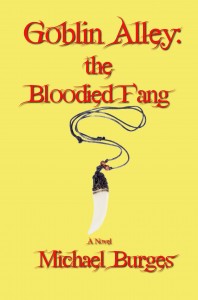 4. What success have you had with working with local libraries?
4. What success have you had with working with local libraries?
Since I work in the local library I haven’t wanted to do anything that suggests I’m using my position to promote my business, so I haven’t asked for the library to add my indie books. There are a couple traditionally published books that have my shorter work in them, like the Star Trek anthology, but otherwise none of my work is listed in my library. If patrons independently suggested the library add copies that’d be one thing, but I’m not going to use my position to get my books into the library.
I have, however, used my knowledge to benefit our patrons and present programs. Sometimes that’s working with other authors. I’ve got a program coming up where I’m going to teach local folks how easy it is to publish their work on the Kindle and other platforms. I think it’ll be a lot of fun but it’s not going to be about my work beyond mentioning that I do have experience working with these sites.
 5. For an Indie Publisher, how should they approach libraries? Is this different than for authors?
5. For an Indie Publisher, how should they approach libraries? Is this different than for authors?
A publisher is a publisher. It’s a business. I could easily see Glittering Throng Press (my publishing business at www.glitteringthrongpress.com) sending out book catalogs to libraries just like I’ll send to book stores. I’m also interested in co-op displays in libraries. I don’t think many publishers are doing this right now with libraries, but as book store spaces shrinks I could see a publisher doing an co-op placement where they provide the books to the library at no cost in exchange for placement. Free books for the libraries, better exposure for authors, and a benefit for readers. I’d also like to approach Friends of the Library groups about selling e-book gift cards as a promotion tool for them, give them a deep discount on the cards, and have a little desk display or something with the cards for them to sell. There’s over 9,000 public libraries in the USA, that’s a lot of potential avenues to promote material. I think going forward into the future libraries are going to be more critical at generating buzz and interest in an author’s work.
So yes, I think there’s a difference in approach between publishers and authors. An individual author is making a one-on-one connection with librarians and library patrons, while a publisher is developing more of a business relationship with the library.
6. And beyond the libraries, how successful have you found the loss leader approach to selling your fiction? Are there other methods of promotion you’ve tried and how have they worked for you?
I strongly agree with folks like Dean Wesley Smith when they say that the best promotion is writing more. As a writer that should be our first priority. You’ve got to keep the material flowing so folks can find more material. Kristine Kathryn Rusch was just talking about this in her recent post on Comparisons (http://kriswrites.com/2011/08/10/the-business-rusch-comparisons/), any promotion you do creates a short-lived blip in sales. It can become very time consuming if you’re spending all your time trying to keep that ball up in the air.
For a year I released a new e-book each week. Most have been freely available online for a week at a time on my publisher site, while selling as e-books. One of the best things about that was simply getting out new material each week. I’d originally planned on continuing that all this year but I’ve recently decided to refocus my priorities. So now with short fiction I’m putting more of an emphasis on sending stories out to traditional professional markets, places like Analog Science Fiction or The New Yorker. If a story doesn’t sell after making the rounds to the major markets I’ll still release it as an e-book, because I believe in the stories I write. Just because a story doesn’t sell to a major market doesn’t say anything much about the quality of that story. I’d just rather get paid pro rates first, and gain the exposure of having the story out, and then put it up as an e-book afterward. The next story coming out is in On Spec Magazine, I believe in their Summer 2011 issue, so I’m looking forward to that, it’s a great magazine for speculative fiction.
In the meantime I’ll continue to feature various stories on my publisher site, and in the process I’m revisiting blurbs and sometimes covers, updating the e-books before the story gets featured. The first I’ve done is “Alley Cat” by Michael Burges, which is a fun story set in the same universe as my first Goblin Alley novel, Goblin Alley: the Bloodied Fang. I don’t know if I’ll get one up each week, but I plan to update fairly often.
I have tried other methods. One of my Filming Dead Things novelettes, Farm of the Dead Things by Tennessee Hicks, is available pretty much everywhere for free and includes sample chapters of the first novel in the Dead Things series. That’s been downloaded thousands of times and the sales of the series have increased since it went free. The second novel in the series, Dreaming Dead Things, is due to be released in the next few weeks and I think that’ll have an even bigger impact just because there’s going to be more available for the folks that enjoy the series. Next year I’ll follow up with the third novel, Killing Dead Things.
Beyond loss leader sorts of experiments I’ve maintained an active presence on Twitter (ryanmwilliams) and Facebook where I have public pages for each pen name. I don’t know if those lead to more sales, I think the writing has more to do with sales, but Twitter and Facebook do provide an opportunity to engage with readers. I enjoy that and enjoy following the feed from other folks. Lately I’ve been exploring Good Reads more and want to do more with that than I’ve been doing. Plus I have websites for each pen name and my publishing site. I look to the sites as avenues for readers to find out what’s available, and what they might want to read next. Particularly the series, I want it to be clear what’s next.
I don’t have any hard data to show whether or not social media, websites, or message board participation increases sales. And I don’t worry about it. I do those things because I enjoy it, not because it increases (or not) sales. I do know that they don’t help me get more written (having the opposite impact), so I have to watch that and make sure I get my words in.
Bottom-line on promotion: write more!
Thanks for asking the questions, I’ll stop now before I hit 2,000 words!
And thank you, Ryan, for this wealth of information.
Ryan Williams has worked for over twenty years in libraries, currently managing a small town library in Tenino, Washington. Like Dalton Hicks from his Goblin Alley series (written as Michael Burges), he runs long distances, working up to ultra-endurance events. He also hopes to ride the Tour Divide mountain bike race from Canada to Mexio. He writes a wide variety of fiction, including urban and contemporary fantasy, science fiction, horror, and mystery under several different pen names. He has sold stories to On Spec Magazine, Star Trek: Strange New Worlds and Alien Skin Magazine. He holds a master degree from Seton Hill University in writing popular fiction, and as a member of the Oregon Writers Network, Michael also graduated from the master class taught by bestselling authors Dean Wesley Smith and Kristine Kathryn Rusch. Find him online at www.ryanmwilliams.com or on Twitter as ryanmwilliams.
A new, ongoing feature of my website is a free fiction page that will offer free short stories and/or novel chapters. For the first free fiction, here is my Short Story The Wife’s Tail.
To recap this series to date, I’ve talked about blogs and a little about reviews. We’ve heard about using social media with the caution that none of these should take time away from your writing, and we’ve also discussed books and branding and getting ready for the market. Sounds like we we’ve covered a lot, but there are still a few other things that an indie publisher can do to help get their books to market. That’s what this blog is about.
First of all, I’m going to say that although e-books seem the major way authors/indie publishers are going to get their books to readers, they should not forget the opportunity to create print publications. I refer you to my blog HERE, for options about Print on Demand (POD), and just to recap, it is not that difficult to create a print book if you are prepared to learn the software to do it.
So first let’s talk about some of the other no-cost/low-cost things you can do to encourage people to buy your e-books:
1. Write good books. I know this seems self-evident, but writing good books and writing lots of them is a critical way to become known. Think about it as in terms of the laws of chance. If you have one book up online there is far less chance that people will discover you, than if you have ten or fifteen. So focusing on writing good books for your market (under one name—for each pseudonym you need to do the same) is a critical piece of your marketing.
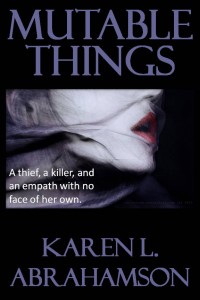
2. Create good covers. This means studying the covers of best sellers in your genre and picking out the things that you think will sell your book. It means finding strong images for your covers because these are the first things that prospective readers see.
3. Write good blurbs/back cover copy. This is the second thing that readers see about your book. Is it interesting? Is it active? Does it raise a question a potential reader might want answered?
4. Within your e-book whether short story or novel, include links to other writing you have for sale. This can be as simple as listing other stories/novels available for sale. It would be better if you included links in the story that will take the reader directly to the other story/novel, so that the reader has the fewest number of clicks necessary to purchase your other material.
5. Include excerpts. This is something I am just starting to do. This means including the first chapter or two of another, similar novel/story, so that the reader can sample it. Hopefully you have good openings and the reader will come to the end of the sample and want to read on. There’s where you insert the link(s) to where the reader can purchase the other book.
6. Loss leaders. If you have short stories that either include the characters in your novel , or are in a similar vein to your novel (e.g. same world, or genre), you can try putting the short story up for free with the free excerpt to the novel attached. A number of friends are finding good success with this. Similarly, if you are writing a series and have the second or third (or fourth etc.) novel coming out, you can sell the first novel in the series at a cheaper price for a limited time.
7. Free Fiction on your website. You can also put short stories like loss leaders up on your website to encourage people to come and read, and then purchase other writing through links on your website.
8. Book cards. (okay, this involves some upfront money, but I still thought I’d include it.) This is a relatively new idea that hasn’t been put in place too much yet, but it involves having gift cards printed for your book and packaged in such a way that they can be sold in book stores. A Canadian company is experimenting with this as are a couple of professional writers I know. These cards can also serve as loss leaders that could be sent to book bloggers or reviewers, or they could be given for free at conferences, or they could be marketed in books stores.
So those are some of the things you can do to market e-books. For POD there are another few options, but these options generally require you to have more than a few books available.
1. Create advertisements for books. If any of you have been at Science Fiction conventions, you’ll recall how there are tables with fliers about upcoming or available books. You can do this too, by emulating book advertisements in magazines or publisher’s catalogues. If you have mastered the process of creating a book for POD, you can certainly create a book flier. These can be distributed at conferences or other book fair events you attend.
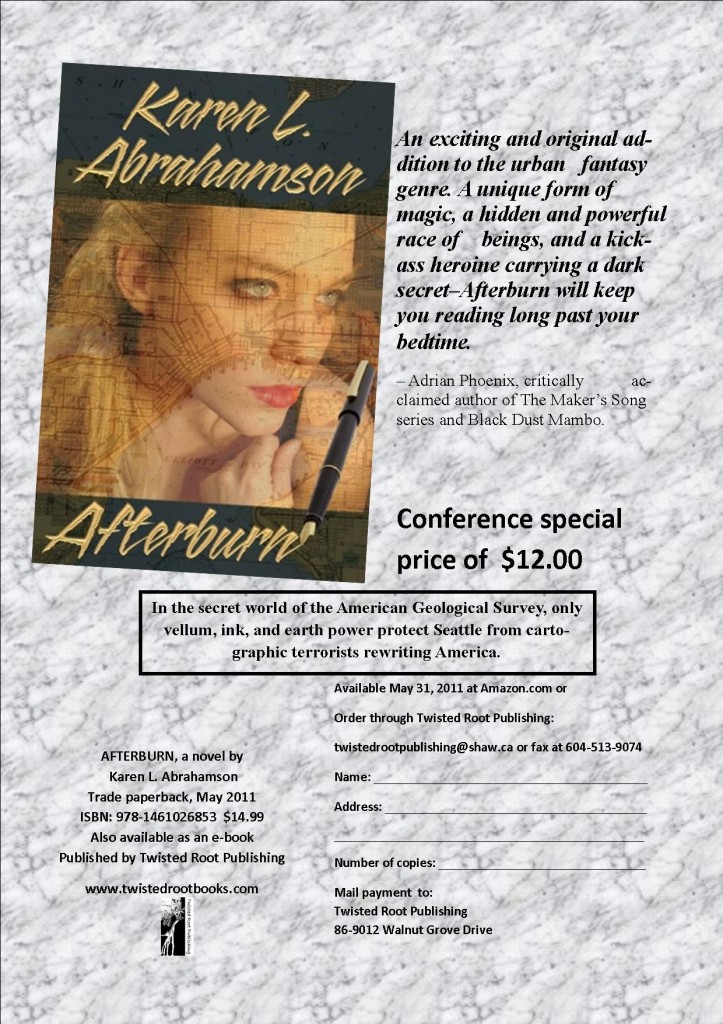
2. Use your local libraries. Often libraries like to support local writers. Approach them about ordering your books. Alternatively offer to donate some.
3. Take advantage of opportunities at conferences etc. to sell your books and promote yourself. If there are opportunities to sell your books then make copies available for sale. Have fliers of your soon-to-be-available books to pique people’s interest. Get on speaker’s lists to talk about your books or related topics and be gracious and interesting when you talk.
4. Approach local bookstores to determine their interest in local authors. I know of at least one local chain that has a policy of supporting local writers and carrying their books. Make sure they know about your work. Take them samples. Which brings to me the biggy:
5. Create a publisher’s catalogue of work available. This includes all the books available from your indie publishing company. Usually this should be at least ten different novels and anthologies. (Remember, you can create anthologies from your short stories, including the freebies.) This means that you create a full color booklet that can be distributed to bookstores locally or even farther afield either through hand delivery or mail out. The big thing here, like with covers, is to ensure your catalogue is professional looking and clearly spells out how and where to find your in-print books.
So those are some options for indie publishers to market their books, whether e-books or print. I haven’t tried them all, but I’m working on it. So what other strategies have you tried and how have they worked for you?